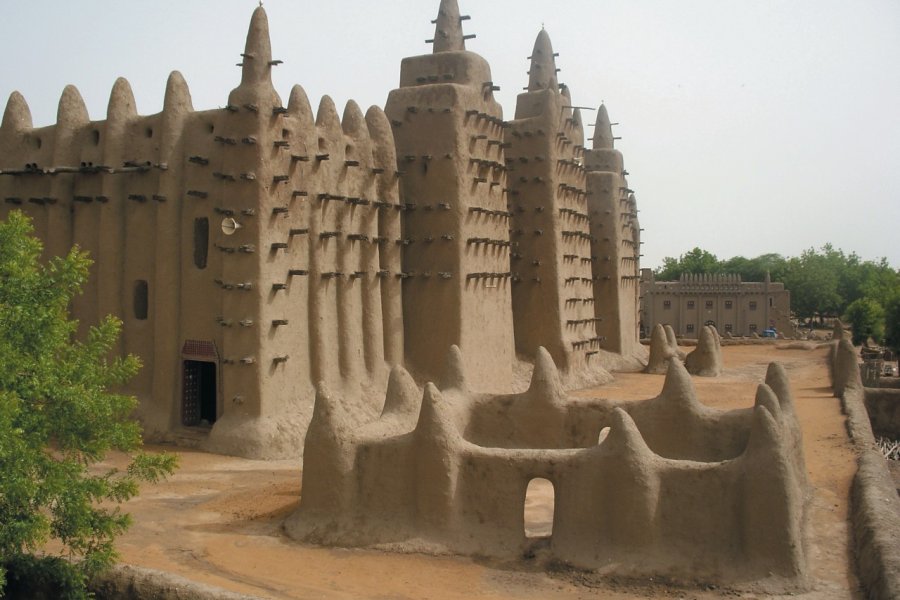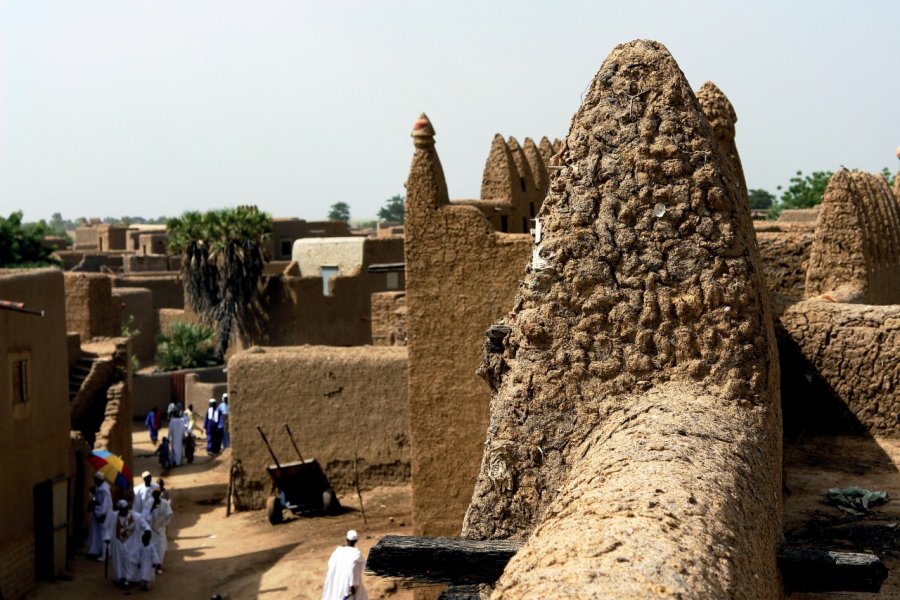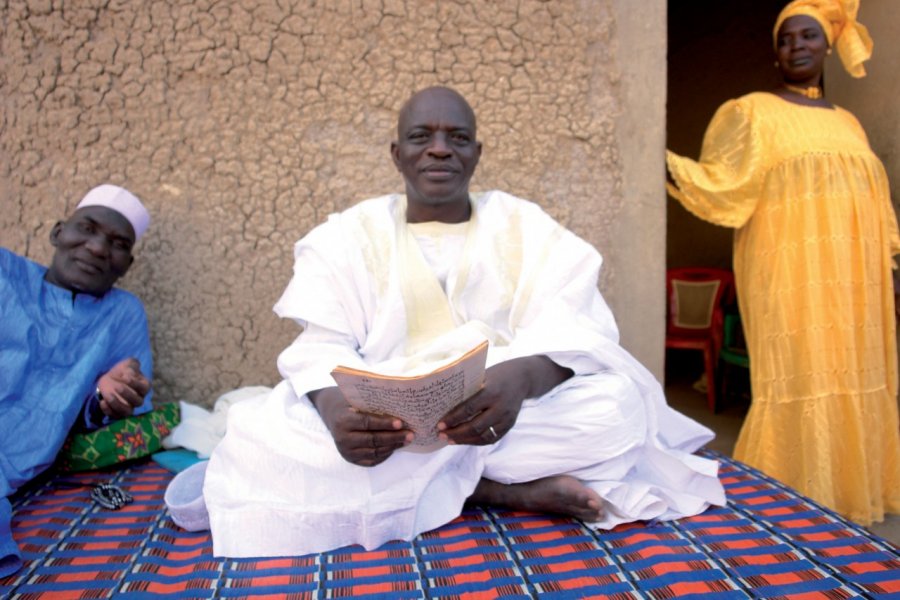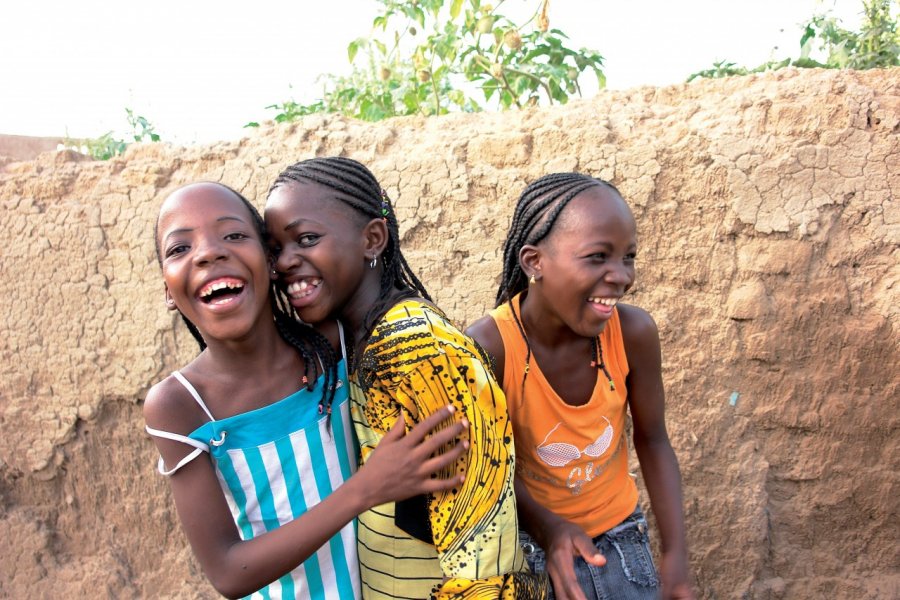Travel Guide Djenné
Find an accommodation
Advertising
In the Tarikh es Sudan, one of the first writings mentioning it, it reads: " Djenné is a big city flourishing and prosperous. She is rich, blessed with heaven, and encouraged by him. God gave this country all favours as a natural and innate thing. " Later, explorer René Caillié will also be impressed by Djenné's splendour, when he will be rather disappointed by entering Timbuktu, the true objective of his journey. Called «the jewel of the Niger Valley», Djenné is undoubtedly the most beautiful city in Mali, and even in West Africa. The city, conquered by different empires, has always been spared by looting. The beauty of the places has been preserved. A walk in the winding streets of the city, between the houses on the floor and the pediment, will give the visitor an intense break. You have to go on the terrace of a house to enjoy a wonderful view of this city, inscribed since 1988 on the UNESCO World Heritage List.Surrounded by the waters of the Bani, a tributary of Niger, this medieval city, which is entirely built in unity and which has the same colour as its soil, seems to be all right out of the earth. The almost monochrome surfaces of facades and the scarcity of ouvertures ouvertures. Doors and windows, or even lethal, give to see only shadow holes. Everywhere, the eyes are forbidden from entry by crafting, green and red panels, faded by the sun. The so-called «maroco-Sudanese» architectural style, which characterizes the city, is particularly evident in the invoice of these doors and panels, with the magnificent arabesques sometimes reinforced with massive nails. Nothing is these houses! The narrow streets, which look alike, form a real labyrinth in which one would like to lose. They are poorly attended. Only the squares opening in the detour of an alley are a little animated. In the evening, light is the most beautiful, but the city will give you more easily its charms early in the morning. This is the time when the children, sitting around their master, follow the courses of Koranic school. It is also a time when, enjoying the freshness, everyone after having restored themselves to a small shop made up of bric and broc and having exchanged a few words, fills in to its occupations. This city has a magical character!Nothing has changed to Djenné for centuries. The city was electrified and equipped with water supply facilities. A few years ago, before the installation of a modern telephone station, the city had only one telephone line. A number of administrations and notables had a device, yet we had to wait until the single line was free to call. A long time in competition with Timbuktu for the pre-eminence on the trans-Saharan trade and the renown of its medersas (Koranic schools), Djenné became an agricultural city of medium importance with its 10 000 inhabitants.The construction of the Djenné Osquée is the prestige of this high place of Islam in West Africa. Even today, the city has some Koranic schools, which will have resulted in a large number of children from the subregion continuing to arrive there to improve their religious education. If you walk through the city early in the morning, you will be surprised by their number. The Millennium Show: The children are seated around their master, who inscribed in chalk on a wooden board (whose form recalls the Tables of the Law of Moses), one surat, verse of the Koran, which they are required to learn by heart. Djenné, a town populated by Bozo, De and above all Fulani, is known for its mosque, the most beautiful of the country, built to compete with Mecca.On Monday, market day, peuhl women are a parent of beautiful gold jewelry (bracelets, necklaces, rings in the nostril) and especially sublime and twisted earrings.History. Most of the documents on Djenné ancient history come from the Tarikh es Sudan, a th century chronicle, written by a Muslim scholar, Es-Sadi. According to the latter, the city was founded in the th century (the choice of the site would have been dictated by the spirits, by its position on the banks of the Bani). But, at 3 km, already existed for 250 years before J.-C Djenné Djeno, which, from a small village founded by the Bozo (Djenné means water engineering in the language of the Bozo), became, from 800, an important economic and religious crossroads already numbering several thousand inhabitants. Djenné, following the footsteps of Djenné Djeno, is an important shopping centre frequented by merchants throughout the Sudan, Tropical Guinea and the Maghreb. Like Timbuktu (often referred to as twin sisters), Djenné is the clearing house where gold flows through gold, slaves, kola from the south and salt from the Sahara from the north, making the city one of the richest and most cosmopolitan in Africa. Around the th century, the influence of Muslim traders in North Africa led to the conversion of the city to Islam under the reign of Koy Kounboro.In the th and th centuries Djenné was connected to the empire of Mali. In 1468 (or 1473 according to historians) the city falls, after a siege which, according to Es-Sadi, lasted seven years under the domination of the Songhai Empire, led by Sonni Ali. Under the tutelage of these two empires, ensuring stability and security, the city has its most prosperous period and becomes an important centre of Islamic studies. It then houses between its walls, in an atmosphere of exemplary tolerance, Arabs, Blacks and Jews. Its universities and libraries then attract scientists and professors from the whole region, but also from the Maghreb and even from Arabia. Djenné is then the capital of the Arab world of medicine research. But when Moroccans take the City in 1591, Djenné has already begun its irreversible decline. The Moroccan period, until the th century, will profoundly mark the culture of the city. The Moroccan influence has mainly manifested itself in architecture, carpentry and gastronomy. However, this period is more generally characterised by its instability and the decrease in trans-Saharan traffic, which is key to the wealth of Djenné, in favour of trade with Europeans along the coasts. The influence of the latter, which arrived in the th century, will grow in such a way that Djenné will never recover. The Armas, descended from Moroccans, were first defeated in 1810 by the Peuhl soldiers of Cheikou Amadou, who destroyed the wall of nearly 3 km long protecting the city. The city is then attached to the theocratic state of the Peul kingdom of Macina, and attempts to reform the practice of Islam by the latter will not promote its stability.In 1862, the Toucouleur of El Hadj Omar Tall captured the city fairly briefly. Their domination, which lasts from 1862 to 1893, is also a failure of restoration of the greatness of the city. Thus, when Commander Archinard, in April 1893, walks on the city, he encounters no opposition and discovers only the symbols of the greatness of one of the largest economic and cultural crossroads in Africa. That is why it prefers Mopti to establish the country's shopping centre, to move Djenné towards agricultural activity.
What to visit Djenné?
Advertising
Suggested addresses Djenné
Weather at the moment
Advertising
Organize your trip with our partners Djenné
Transportation
Book your plane tickets
Car Rental
Boat rental
Accommodation & stays
Find a hotel
Holiday rental
Find your campsite
Tailor-made trip
Immersion travel
Services / On site
Activities & visits
Find a doctor










